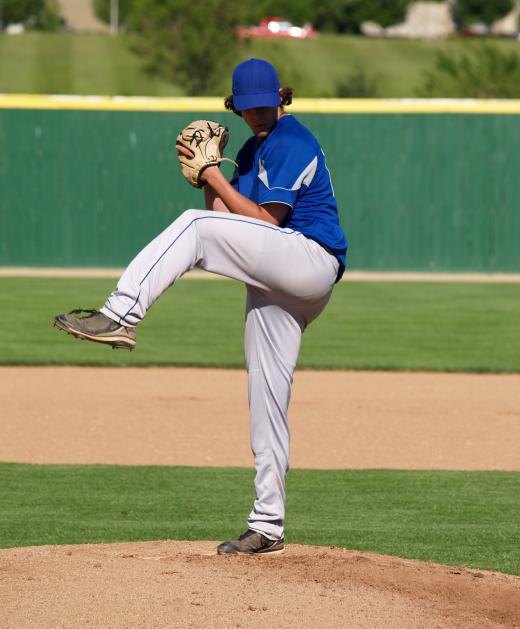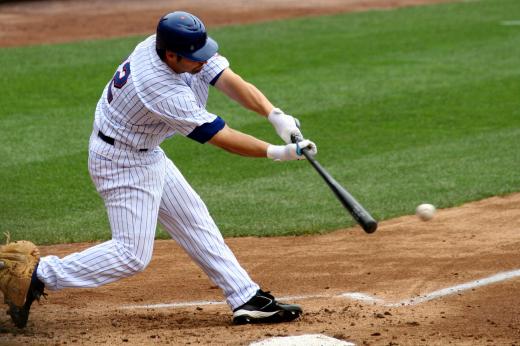Who’s (really) on first?
Bud Abbott and Lou Costello, a comedy team from the 1940s, featured a classic routine about a mythical baseball team’s line up. The skit had Abbott, the team manager, identifying to Costello and confusing him with illogical player names. For example, Who was the first baseman, thus, the routine was titled, “Who’s on first?” Many of today’s baseball managers and fans who deal with the batting out of turn (BOT) rule may feel about as confused as Costello. Nevertheless, what was a comedy routine and being confused was all part of Costello’s shtick.
Let us begin to explore the BOT rule by asking a question: When is a player out for batting out of turn? The answer is NEVER and this is the crux for much of the confusion in dealing with BOT, MLB Rule 6.07. When the rule is properly appealed, many think it is the improper batter who is called out. On the contrary, it is the proper batter who is called out for failing to bat in the proper order. Furthermore, many times invoking the BOT rule results in the improper batter being the next proper batter who bats again. For this reason, the defensive manager should weigh his options on whether invoking the BOT appeal is best for the situation.
Terms you must know:
A BATTER is an offensive player who takes his position in the batter’s box.
BATTER-RUNNER is a term that identifies the offensive player who has just finished his time at bat until he is put out or until the play on which he became a runner ends.
The PROPER BATTER is the player who, according the umpire’s line up card is the legal batter.
The IMPROPER BATTER is any player who bats in the place of the PROPER BATTER.
The latter two terms are important. When a player bats out of turn (order), MLB Rule 6.07 clearly provides guidance for umpires to correct the situation. Here are the main points to remember the sequence for applying the rule for batting out of turn (BOT):
Proper Batter (PB), as listed on the plate umpire’s line up card. When properly appealed, the PB is ruled out for failure to bat in the proper order.
Improper Batter (IB) is any player who bats in PB spot. This is an appeal play and the umpire cannot act until the defensive team appeals. When properly appealed, the IB time at bat is nullified and all associated direct actions.
Appeal BOT period begins when the IB bats in PB spot and expires when a pitch is made to a subsequent batter of either team or any play or attempted play.
The defensive team Appeals the IB: (Select only one option per example)
A. – Immediately.
Action: No rule violation as the IB has not completed his time at bat; the umpire directs the PB to replace IB and the PB assumes same ball-strike count. Nullify any runner advances caused directly by IB actions.
B. -- After IB completes his time at bat.
Action: Declare PB out; nullify any runner advances caused directly by IB actions.
C. -- Before a pitch to a batter of either team or any play or attempted play.
Action: Declare PB out; nullify any runner advances caused directly by IB actions.
D. -- After a pitch to a subsequent batter of either team or any play or attempted play.
Action: Too late for an appeal, legalize IB turn at bat. Next PB listed on line-up card follows legalized IB.The batting order is restored and the sequence begins anew with the next IB.
Review: Improper batter bats in proper batter’s spot.
1. There is no rule violation until the IMPROPER BATTER completes his turn at bat
2. No penalties are assessed unless the IMPROPER BATTER completes his turn at bat and the defensive team properly appeals.
3. BOT is an appeal play. The defensive team must appeal before the umpire can take action to restore order to the batting line-up.
4. Once a pitch is delivered to a subsequent batter of either team or any play or an attempted play, the right to appeal expires and the preceding batter, even though he batted out of order, is designated as the PROPER BATTER.
SITUATION BOT # 1: When a manager juggles his line up, changes in the batting order often lead to a mix-up. For example, in the first inning, improper batter No. 6 bats in proper batter No. 5 spot and fouls off the first pitch. Immediately the defensive manager appeals to the umpire that the wrong man is batting. Is the batter out?
ANSWER: No. Appealing the improper batter’s time at bat too soon is a common mistake. There is no rule violation until the improper batter (No. 6 in this case) completes his turn at bat. Then, depending upon circumstances, the defensive manager may decide that it is not in his team’s best interest to appeal the improper batter. In BOT # 1, if the opposing manager appeals to the umpire, improper batter No. 6 is replaced by the proper batter No. 5 who then assumes No. 6 ball/strike count of 0-1. In retrospect, the defensive manager has nothing to loose with improper batter No. 6 completing his turn at bat. If batter No.6 hits safely or otherwise gets on base, there is still time to appeal BOT, and thus nullifying his time at bat.
SITUATION BOT # 2: No. 3 is the proper batter; however, improper batter No. 4 bats in his spot and triples. Then No. 3 comes to the plate. The pitcher delivers one pitch for a ball before the defensive team appeals. Who is out?
ANSWER: No one. The appeal of improper batter, No. 4, was made too late, as it had to be made before a pitch was delivered to a following batter of either team. Therefore, the pitch to No. 3, legalized No. 4’s triple (6.07c). Because No. 4’s time at bat was legalized, the (next) proper batter is No. 5 thus restoring the batting order. POINT; The instant an improper batter’s actions are legalized, the batting order picks up with the name following that of the legalized improper batter (6.07(d) (1
SITUATION BOT # 3: With the bases, loaded, improper batter No. 7 bats instead of proper batter No. 6. On the first pitch, the runner on third steals home. The pitcher then balks, advancing the runners to second and third. Improper batter No. 7 then hits a home run whereupon the defense appeals claiming No. 7 has batted out of turn. Who is out and how many runs count.
ANSWER: Score one-run since it was not the result of any act by the improper batter, as the runner’s steal of home would have scored regardless of who was batting. Proper batter No. 6 is ruled out and improper batter No. 7 home run with two runners on is nullified.
SITUATION BOT # 4: Batter No. 1 pops up. The batting (offensive) team manager then informs the umpire that No. 9 was the proper batter. Should the umpire recognize the appeal?
ANSWER: No. Only the defensive team may appeal batting out of order. To allow the offensive team to appeal BOT would invite chicanery. (6.07b)
SITUATION BOT # 5: No. 4 is the proper batter. With a runner on second base, No.5, an improper batter walks and reaches second base when a fourth ball eludes the catcher. Meanwhile, the runner on second base advances to third base. The defense appeals. What is the ruling?
ANSWER: Proper batter No. 4 is ruled out for failure to bat in the proper order. Improper batter No. 5 time at bat is nullified and the base runner is returned to second base, since the advance resulted from the play on an improper batter. Had the runner stolen third base on the pitch, his advance would have been legal and separate from the actions of improper batter No. 5.
SITUATION BOT # 6: No. 7 is the proper batter. No. 8, an improper batter, bats in his spot and singles to right field. No. 9 bats and doubles to right field, advancing No. 8 to score. Amid the confusion, No. 2, an improper batter, bats next and takes a pitched ball one. The defense appeals improper batter No. 2. Who is out and how is order restored to the line up?
ANSWER: No one is out. No. 9’s at bat legalized No. 8 improper batter status. The scheduled batter is No.9, however, since he is all ready on base, skip over his name in the line up. No. 1 the proper batter follows Batter No. 9 in the line up. Therefore, Batter No. 2 is an improper batter who has not completed his time at bat. No. 2 is replaced by No. 1 the proper batter and assumes No. 2’s ball/strike count of 1-0.
In summary, these fundamentals govern the batting out of order (BOT) rule:
-- When a proper appeal is made before the improper batter completes his time at bat. ACTION: Replace the improper batter with proper batter who assumes the ball/strike count of the improper batter.
-- When a proper appeal is made after the improper batter completes his time at bat. ACTION: Declare the proper batter out and nullify any runner advances that were a direct result from the improper batter’s actions.
-- Once a pitch is delivered to a subsequent batter of either team or any play or an attempted play, the right to appeal expires and the preceding batter, even though he batted out of order, is designated as the PROPER BATTER. With the batting order restored, the sequence begins anew.



